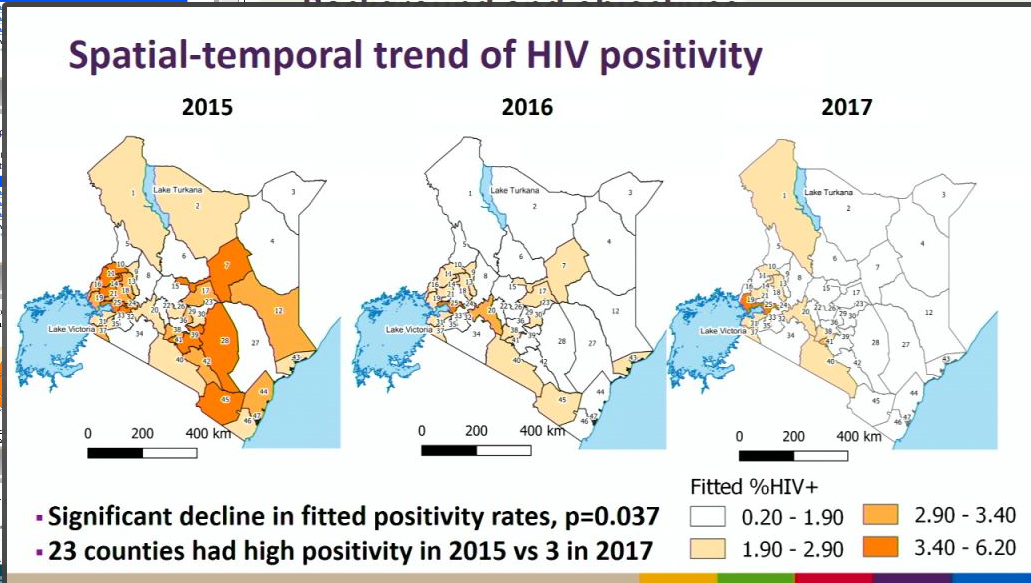Using spatial-temporal data analyses to explain impact of HIV treatment in Kenya
Although across Kenya there has been a significant decrease in HIV positivity between 2015 and 2017, there are still some gaps that can be identified through spatial-temporal analyses and modelling. A PhD student from CIH talked about his work with spatial-temporal analyses at the prestigious CROI conference held 4-7 March, 2019 in Seattle.

Main content
According to its website, the Centers for Disease Control and Prevention (CDC) in Kenya is addressing the region’s toughest health problems at their source, directly working with vulnerable families and communities in local hospitals, clinics, and labs. CDC is one of the U.S. implementing agencies of the U.S. President’s Emergency Plan for AIDS Relief (PEPFAR). To make the most effective use of U.S. investments it is important to identify “hotspots” or problem areas, where extra efforts may be needed.
Thorkild Tylleskär’s, PhD student, Anthony Waruru was selected to give an oral presentation at this year’s Conference on Retroviruses and Opportunistic Infections (CROI). According to the conference website, CROI, which was established in 1993, is the preeminent HIV research meeting in the world and includes up to 4,000 leaders in HIV research and care internationally.
An epidemiologist with CDC Kenya, Waruru is studying how the vast amount of public health data that is now being collected can be analysed to identify how funding efforts can be used at the right locations for the greatest effect.
Using data to identify geographic disparities
Kenya has 47 counties. However, 5 of these contribute to much of the country’s HIV burden. By analysing the data collected by the National AIDS and STI Control Programme, Waruru and colleagues were able to show that there has been an overall decrease in HIV positivity between 2015 and 2017. In 2015, 23 counties had a high burden of HIV, while in 2017, only 3 continued to have a high burden. This result is useful for future planning efforts to continue to effect the HIV health burden in Kenya. In particular, it highlights the need to examine these 3 counties more closely.
Anthony Waruru’s oral presentation:
VIRAL LOAD SUPPRESSION AND YIELD OF HIV TESTS ARE SPATIALLY CORRELATED, KENYA 2015-17
link to abstract link to live stream
Waruru also presented a poster on behalf of his co-authors at this year’s conference:
HIGH NCDs INCIDENCE AMONG PLHIV IN KENYA: LONGITUDINAL ANALYSIS OF TREATMENT OUTCOMES
link to abstract

